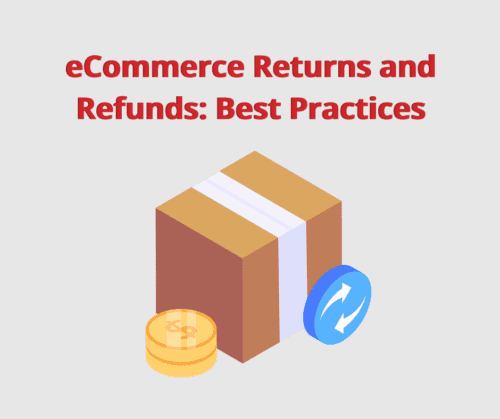Ecommerce return fraud. Unlike so many other things, it’s not something that we can blame on 2020. Return fraud for eCommerce retailers has existed almost since the advent of selling online.
That’s not to say that return fraud – like many other types of eCommerce fraud – didn’t get worse over the past year. In fact, the National Retail Federation reported that online returns doubled in 2020 compared to 2019, with $102 billion in total eCommerce returns for the year – $7.7 billion of which was deemed to be fraudulent.
Online retailers need to defend themselves against these losses. But being overzealous can lead to lost sales. What online sellers need is a delicate balance between protecting their business and maintaining a clean, frictionless, and welcoming customer experience. That can seem like a tall order. The good news is that implementing a few, easy strategies can set you on the right path.
Return Fraud and the Customer Experience
Generally speaking, eCommerce consumers are a savvy group. They are used to things like free 2-3 day shipping, multiple payment options, buy-online-pickup-in-store (BOPIS), and even same-day delivery. The bar has been set high.
There’s a reason for wanting to create all of this customer goodwill. As researcher organization Forrester reported, customers that have a positive shopping experience are more likely to recommend the business to others and make repeat purchases, and less likely to defect to another retailer.
Of course, when a purchase process is easy for real customers, it can also be easy for fraudsters if an online retailer isn’t careful. Unfortunately, the opposite is also true – make the purchase process hard for fraudulent customers, and you’re probably adding a lot of friction into the process for real ones, too.
The Look of eCommerce Return Fraud
Because eCommerce return fraud comes in a number of shapes and sizes, it can be tempting to lock down the purchase process to prevent loss. The most prevalent online fraud types include:
- Wardrobing: This is when a customer purchases an item, uses it for a limited time, and then returns it. A common example is someone who buys an expensive clothing item for something like a wedding, hides the tags, and then returns it after wearing it. However, despite the name, it’s not limited to clothing. Wardrobing happens with electronics, like TVs around big sporting events or camera equipment used during an important event or vacation.
- Friendly Fraud: This is when a consumer purchases an item and claims it never arrived, or that it arrived damaged. The customer requests a refund, and if they can’t get it from the retailer they may go as far as to request a chargeback from their credit card company.
- Omnichannel Return Fraud: The NRF 2018 Organized Retail Crime Survey found a sharp increase in fraudsters buying items online and returning them in-store. That was before the pandemic, during which many retailers saw an expansion of omnichannel purchasing behaviors.
It seems like combating some of these strategies would be easy. In fact, not taking returns at all is an option, but it’s one that hurts the retailer far more than the consumer. Customers are leery of online retailers that don’t allow returns, with Shopify finding that 80% of consumers check an eCommerce website’s return policy before making a purchase.
4 Easy Ways to Prevent Return Fraud in Your Online Business
It might sound like the situation is bleak. Luckily, it’s not as bad as it seems at first glance. There are a number of easy ways that retailers can reduce the chances of eCommerce return fraud – here are 4 that you can implement almost immediately.
Publish a Clearly Defined Return Policy
The first step is to review your existing return policy for clarity. Remove any ambiguities in the wording, and make sure it’s easy to understand. You might even consider adding a short summary of your policy within the checkout flow, with a link to the larger return policy statement.
As part of your policy, make sure you’re discouraging practices like wardrobing by putting a reasonable limit on the amount of time that a consumer can make a return. You may also consider seasonal return policies that make it easier on the consumer and harder on fraudsters. For instance, you might offer a longer return period during the holiday season, but a shorter one during other times of the year.
Use Tracking on All Shipments
While tracking a package won’t stop friendly fraud, it will make many people think twice before going forward with any plans to report the item as not having been delivered at all. Additionally, it will offer documentation should the customer file a chargeback with their credit card company.
For items reported as damaged, your return policy should include requesting a photo of the damaged item. This will not only slow down friendly fraud, it will also help you determine if there is a problem with your packing or shipping. If the same kind of item is repeatedly reported as damaged, it might be time to dig into how that’s happening. You’ll end up improving your customer experience while preventing losses.
Add Fraud Prevention Tools to Your eCommerce Site
Solid data analytics and proven fraud prevention tools can help you recognize your existing customers and safely vet new ones, even when they use multiple channels or accounts for shopping.
The right fraud prevention tools can reduce friction in the purchase process, protect merchants from false declines, and offer chargeback protection while also helping you recognize your legitimate customers, no matter what device or channel they use to make a purchase.
Require Proof of Purchase and Encourage Exchanges
To prevent Buy Online Pickup In-Store (BOPIS), retailers require anyone retrieving a purchase to show identification and proof of purchase. With Buy Online Return In Store (BORIS) transactions, the same standard should apply.
If a customer is returning something in store that was purchased online, request a receipt and a valid ID or the original purchase method. Returns should be made back to the original card used for the purchase, even when proof of purchase exists. If there is no documentation, but you’re still willing to accept the return, consider only offering store credit. This will help discourage fraud-for-hire schemes and allow you to retain the revenue.
Return fraud for eCommerce purchases is very real, and very damaging for online retailers, regardless of size. While consumers may think of wardrobing or friendly fraud as harmless, it can add up quickly for the retailer. With a few easy changes, eCommerce store owners can discourage casual fraud and prevent more serious, organized fraud initiatives, while still maintaining a positive, healthy customer buying experience.

Rafael Lourenco is Executive Vice President and Partner at ClearSale, a card-not-present fraud prevention operation that helps retailers increase sales and eliminate chargebacks before they happen. The company’s proprietary technology and in-house staff of seasoned analysts provide an end-to-end outsourced fraud detection solution for online retailers to achieve industry-high approval rates while virtually eliminating false positives. Follow on LinkedIn, Facebook, Instagram, Twitter @ClearSaleUS, or visit https://www.clear.sale.






